When many people think of the gate of hell, the picture in their mind may be a terrifying gate guarded by two huge guards who spread flames from their mouths on either side of the dragon pavilion of an ancient Buddhist temple. But we are not going to talk about that hell.
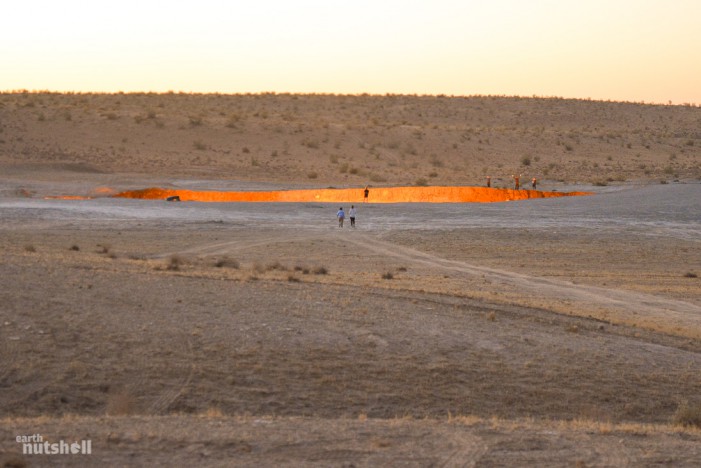
In the heart of the Karakum Desert, which is located next to Iran, Afghanistan, Uzbekistan and the Caspian Sea in Central Asia, in the middle of the Karakum Desert, which is located next to the Caspian Sea in Central Asia, there is a huge fire, the size of a huge football field, which has been burning for almost five decades. Named as the Darvasa Air Crater, it is known by the locals as the ‘Gateway of Hell’.
Among the unusual attractions that tourists get to see in Turkmenistan, Darvaza Air Crater is not a volcano or a magma mountain. Although its origin is uncertain, most believe that it was created as a result of an accident during air drilling by Soviet Russia.
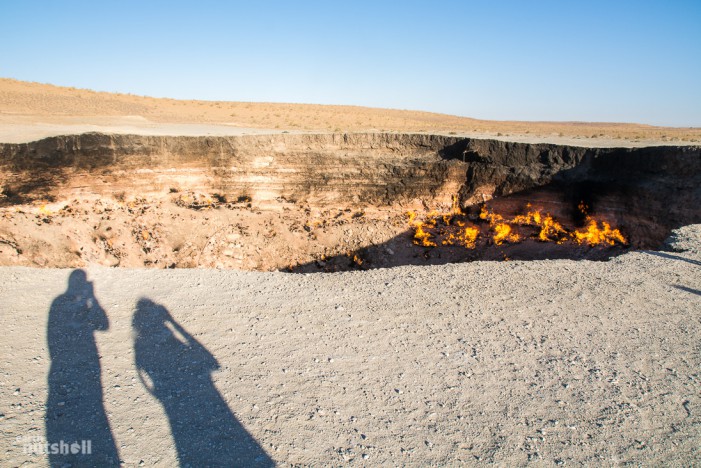
This is information about the ‘Gateway of Hell’ or Darvasa Air Crater, which was born as an improper result of a scientific research that tried to surpass nature, and became a top tourist attraction in Turkmenistan by being decorated with flames.
Heart of the action desert
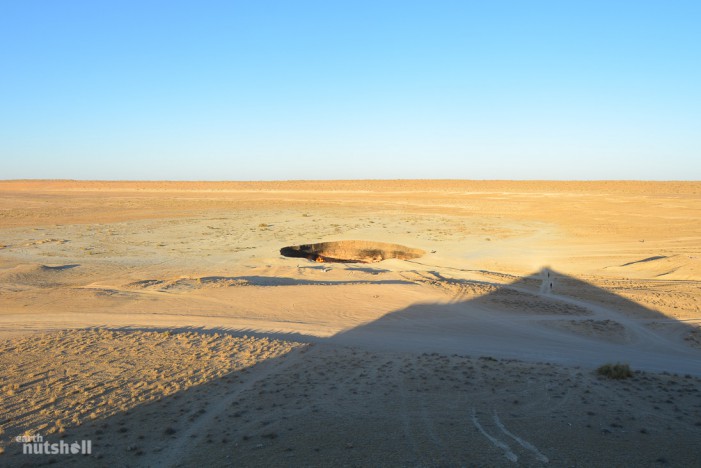
The Karakum desert, spread on the northern border of Ahal state, which marks the southern border of Turkmenistan, belongs to the village of Dervez or Darvaza. In the middle of the desert, about 260 kilometers away from the capital city of Ashgabat, the Darvasa gas crater is considered to be one of the largest underground gas reserves in the world.
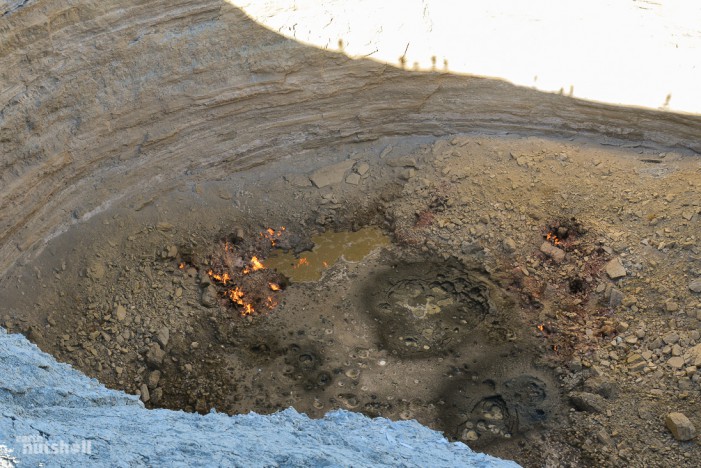
Darwasa Air Crater, nicknamed the ‘Gateway of Hell’ by the natives due to its fiery leaves, bubbling mud and bright orange flames, is about 70 meters in diameter. The molten features are found in an area about 60 meters wide and approximately 20 meters deep. Spread over an area of 5,350 square meters, it is roughly the size of an American football field. Also, the area around the Darwasa Air Crater is popular among tourists for desert camping.
History of the Darwasa Air Crater
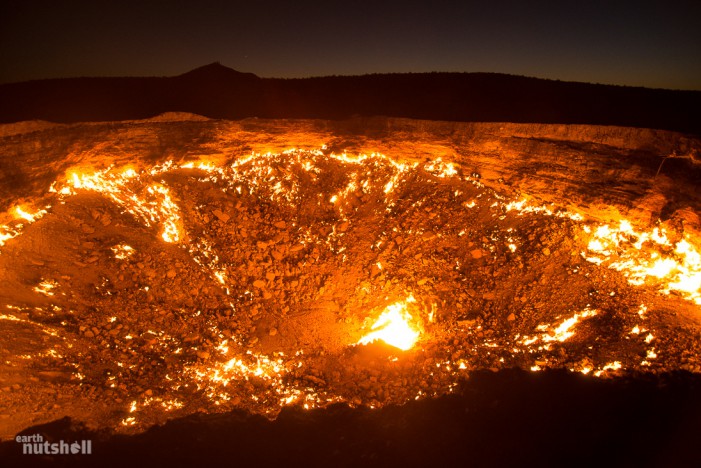
Anatoly Bushmekin, a Turkmenian geologist, believes that the location of the Darvaza gas crater was discovered by Soviet engineers for the first time. That was in 1971. Suspecting it to be a land with a large oil field, they have launched an operation to reach the relevant oil fields and started drilling the land. In the initial measurements made within a short time after the operations began, it was revealed that it was a natural gas field, and as a result of the drilling that had already been done, a crater unexpectedly appeared on the ground, engulfing the operation center as well.
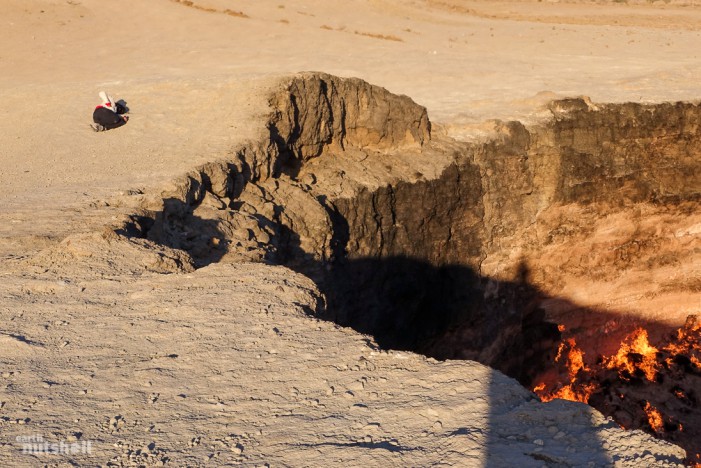
Engineers assumed that toxic gases could be released from the crater and decided to burn the gases released from the crater to prevent damage to nearby villages and towns. They hoped that the gases would burn off completely within a few weeks. But to everyone’s disappointment, the Darwasa gas crater is still burning for almost five decades.
There are many gaps in the history of the crater. Local geologists claim that the crater was formed in the 1960s, but the gas fire occurred in the 1980s. But it has not been possible to find any kind of evidence to confirm the truth of these facts.
‘Hell’s Gate’ today
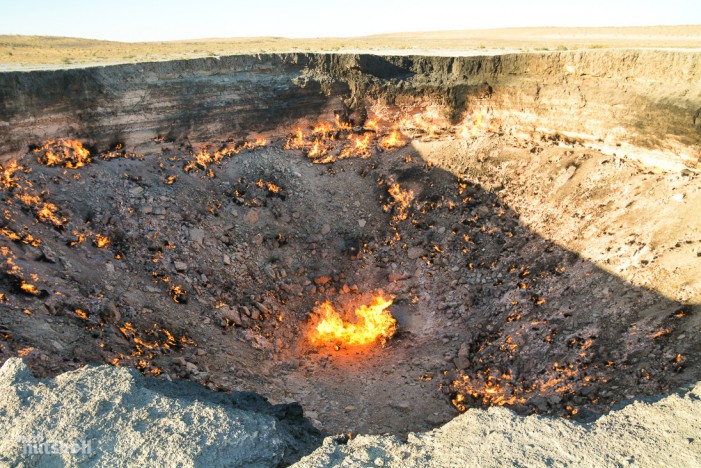
In 2010, the President of Turkmenistan, Garbangali Berdymukhamedov, visited the Darvaza air crater and ordered the relocation of the village of Dervaz and the closure of the crater for security reasons. But that idea did not work and in 2013, the area where the Darwasa air crater is located in the Karakum desert has been designated as a nature reserve.
In 2014, explorer George Kourovnis prepared a documentary program for the National Geographic Channel about the Darvasa Air Crater, and as a result, he had the opportunity to be the first person to set foot on the bottom of the crater. During the related program, it was possible to identify a species of micro-organisms living in the crater, but no specific information about those animals has been received yet.
Cover image: (en.wikipedia.org)



